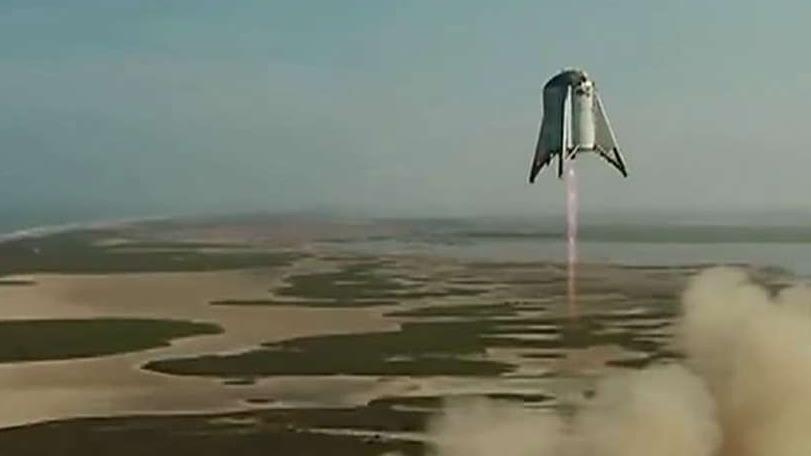SpaceX successfully tests Starhopper after aborted attempt
After an aborted launch attempt on Monday, SpaceX’s test vehicle Starhopper successfully completed its planned flight at 5:02 p.m. C.T. at a test facility near Brownsville, Texas.
The vehicle flew roughly 500 feet off the launch pad, then landed safely on an adjacent landing pad.
The test, which was initially slated for Monday, was aborted less than a second before liftoff after concerns of faulty wiring in the engine’s ignitor. Disruption in the small community near the test facility was reported in the run-up to the Starhopper’s scheduled Monday launch as residents were advised by police to vacate their homes, citing risks to public health and safety in the event of a catastrophic vehicle malfunction.
SpaceX’s Starhopper is a platform used to test technologies, such as the new Raptor engine, intended for the company’s planned Starship spacecraft. The Starship will be the flagship of SpaceX’s line of vehicles and is intended to take passengers and cargo to destinations including Mars, the moon, low-Earth orbit and the International Space Station. When coupled with the Super Heavy Rocket, Starship is intended to be fully reusable while having a payload capacity larger than that of the Saturn V rocket used by NASA to take Apollo astronauts to the moon.
"One day Starship will land on the rusty sands of Mars," SpaceX founder Elon Musk tweeted after the launch.
Starhopper’s success occurred just hours after another major milestone for SpaceX when their Dragon capsule splashed down at 4:20 p.m. EDT in the Pacific Ocean, roughly 300 miles southwest of Long Beach, California, as Space.com reported. The Dragon capsule delivered more than 5,000lbs of cargo to the International Space Station and returned with almost 2,700lbs of material from NASA experiments conducted at the space station.




















